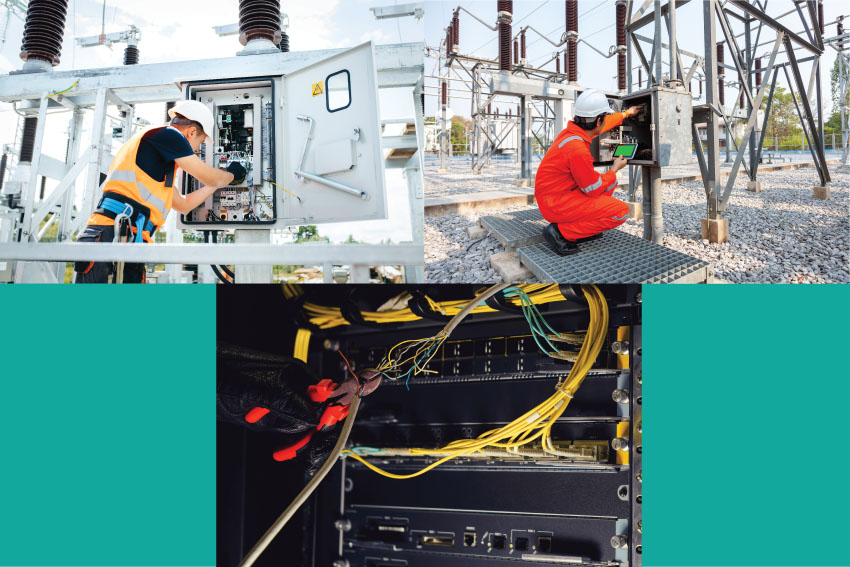
When it comes to workplace safety, working with power lines is a field that presents particular dangers. We recognise the responsibility in educating individuals about the risks associated with working near or around power lines, so we’ve put together a list of the biggest dangers, as well as our top power line safety tips.
How Do Power Lines Work?
Overhead power lines carry electricity between generating stations, providing electricity to homes, businesses, and other buildings. Usually, they involve several conductors suspended above the ground. Between them, different phases of electrical current can be transmitted.
Conductors are usually held atop transmission towers, which keep the electricity out of reach and minimise its risk to passersby. However, this doesn’t eliminate all danger, and caution should always be taken around electricity; especially with high voltages.
Hazards of Overhead Power Lines
Understanding what the potential dangers are around power lines is the first step towards staying safe. Some of the main dangers to be aware of are as follows:
- Electrocution: Perhaps the most obvious risk, direct contact with a live power line will result in an electric shock. Sometimes, these can be so powerful that they cause fatalities. Be aware of any other conducting items nearby, too. For example, you could experience electrocution from a piece of metal near the power line.
- Electrical burn: When electricity passes through tissue or bone, the heat it produces can create severe burns. These require immediate medical attention to prevent them from causing long-term tissue damage.
- Falls: As a follow-on from electric shocks, involuntary muscle movements could cause you to fall over, or to fall from a platform if working from a height.
- Fire: If a power line falls onto a flammable material, it can easily catch on fire. Not only that, but as a result of falling trees, lightning, electrical failures and more, damaged power lines can cause explosions.
- Power Surges: If a power line is cut or damaged, a burst or surge of electricity could damage the equipment, presenting a risk to anyone nearby.
Overhead Power Line Safety
There are several things that you can do when working on or near power lines that will reduce your risk to injury. Our golden rules for power line safety are as follows:
Maintain a Safe Distance
Always be mindful of the minimum clearance requirements specified by local regulations when working around power lines. The recognised power line safety distance is generally several feet, but it may vary depending on the voltage of the power lines.
Our electrical labels and signage solutions can help reinforce these safety guidelines by providing visible warnings and information about site distances.
Use a Spotter
When operating tall equipment such as cranes, cherry pickers, or ladders, it’s crucial to have a designated spotter. This is a person trained especially to assess the proximity to power lines, and communicate effectively with the equipment operator to ensure they maintain a safe distance.
Specialised labels on equipment can serve as reminders to operators about the importance of vigilance, and how to remain safe using heavy machinery.
Identify Power Lines Clearly
Utilise our high-quality labels and signage to clearly mark the presence of overhead power lines in and around work zones. This ensures that everyone on-site is aware of the potential dangers and can take necessary precautions. We even offer warning signs for different voltage levels, enhancing awareness and safety.
Stay Safe with Label Source
While overhead power lines play a crucial role in powering our communities, they demand a heightened level of respect and caution. As a responsible labels and signage supplier, we’re committed to equipping organisations with the tools they need to prioritise employee and civilian safety.
By adhering to established safety guidelines, maintaining safe distances, and leveraging our specialist electrical labels and signs, we can reduce the risks presented by overhead power lines and create a safer work environment. Get in touch today to find out how we can help you and your business stay safe.